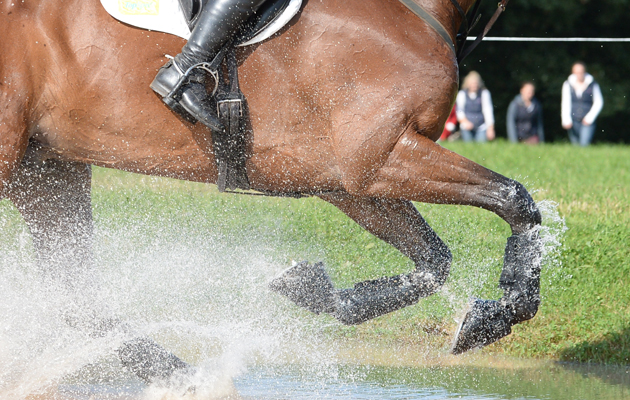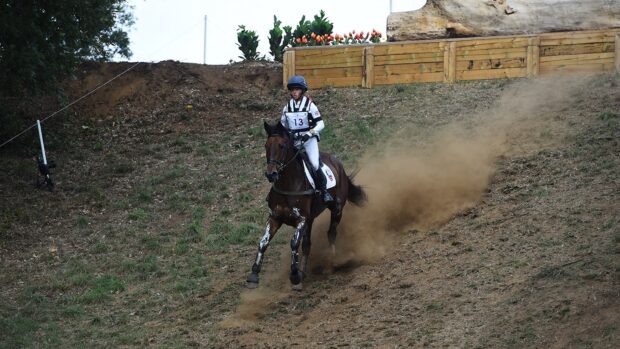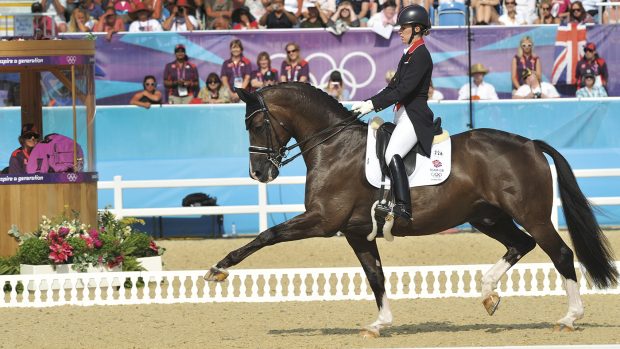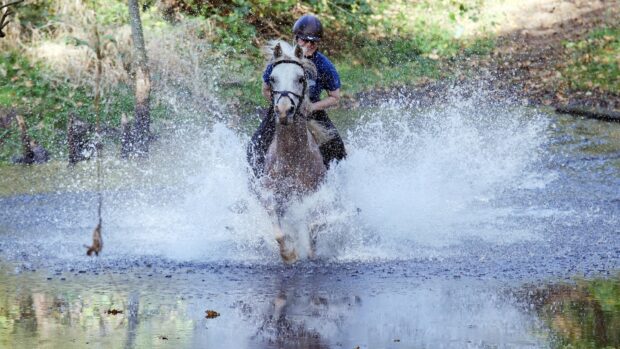Six-time Badminton Horse Trials winner Lucinda Green gives us some helpful pointers on effective cross-country riding that you can put into practise while riding in an arena.
1. “It is up to us as riders to ensure before you start jumping across country that our horses are switched on and up for the job in hand,” says Lucinda.
2. It’s hard to get into a rhythm and maintain pace when cross-country schooling in an arena. But if you think forwards and towards riding at a speed of 400-450mpm this should help to recreate the pace you would jump from out on the course.
“It is important that you don’t get stuck in a canter going nowhere,” says Lucinda.

3. If you are tackling very narrow fences, the horse’s natural reaction will be to avoid the obstacle and run out. Therefore, take it slowly and make the question you would like answered clear. Approach it in a steady trot and once you have jumped the obstacle, halt, turn around and jump back over it.
“Repeat this until the horse is confident with where he is going and he is taking you to the fence without wavering on his line,” explains Lucinda.

4. Horses don’t reason. If they associate a fence, for example a narrow obstacle, with running out, it can be hard to make them change their mind.
“So try to make sure you get it right first time and if things don’t go to plan, don’t make a huge issue of it and go back to basics and clearly explain the question to your horse again,” says Lucinda.
Continued below…

Caring for your horse’s legs after cross-country: what you need to know
The correct care of event horses after the demanding cross-country phase is vital when keeping a horse in good health

10 ways to improve your cross-country timing this season
Even at BE100 getting your timing wrong can scupper your hopes of success. We asked the experts for their tips
5. “Think of riding your horse as a ‘tube’,” says Lucinda. “Keep them between your hand and leg and make sure you ride them so that they register the fence they are tackling early. Remember to always ride towards and away from your fences.”

6. “Our job when riding combination fences is to show the horse where we went them to go next,” says Luncinda. “Be sharp with your reactions to prevent any problems.”
7. “The art of doing nothing is quite an art to master,” says Lucinda. “We must, as riders, understand the danger of thinking about distances and not get obsessed over strides. Instead we must ride what is happening underneath us and your horse will do what he needs to in order to get over the fence, no matter if you are on the right stride or not.”

8. We must ride through corners when schooling and competing.
“Imagine you are driving your car, running late for lunch,” explains Lucinda. “As you drive into a corner you change down a gear. As soon as you have passed the point in the corner where you would have crashed if you hadn’t slowed down, you put your foot down and accelerate out of the corner. Put this into a riding context and you should be able to ride efficient corners on your horse.”




